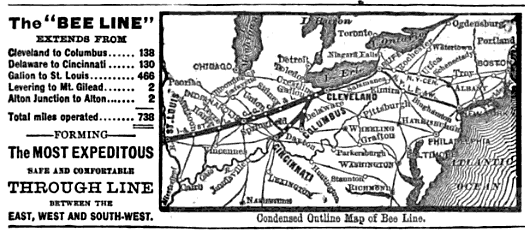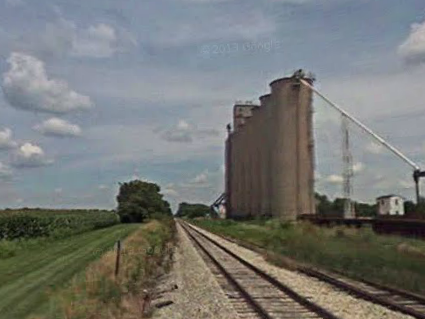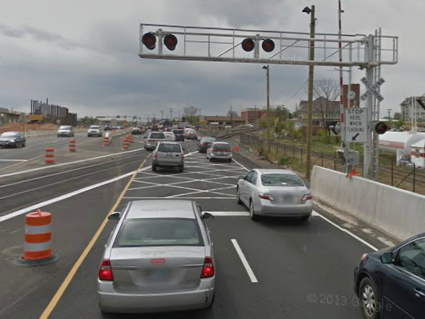I noticed an historical record that mentioned a late 19th Century railroad, the Cleveland, Columbus, Cincinnati and Indianapolis Railway. That’s not what interested me though, it was the railroad’s nickname, the “Bee Line”

What a wonderful name for a railway. I considered it a nice play on words aligning with the idiom “to make a beeline”. For the benefit of international audience, that’s a U.S. English expression for heading directly towards something, usually very quickly. “He made a beeline for the lake when his pants caught on fire.” Maybe someone can come up with a better sentence although I think that one gets the point across.
My mind turned to its etymology. I’d never thought much about it before. I figured it probably had something to do with swarms of bees heading towards pollen once the first bee discovered it, returned to its nest and told all of her sisters about it. I wondered though, perhaps it had something to do with the Bee Line railroad? Which came first, the idiom or the railroad. It was the idiom, of course. The phrase dated back at least to 1808 while the Cleveland, Columbus, Cincinnati and Indianapolis Railway didn’t exist until 1868.
It was a long shot so I can’t be too disappointed. At least it showed that early railroad operators had a good sense of marketing. The railroad line as a bee line, the fastest way between two points. Right? Or as one would say in the stilted advertising language of 1881, “The most expeditious, safe and comfortable through line“. Of course a monocled man would say that while twirling his handlebar mustache.
The Bee Line didn’t last more than a couple of decades before another railroad bought it. That was a common occurrence during the latter half of the 19th Century as railroads consolidated.
The Bee Line – A Short Line Railroad

It’s hard to keep a good name down. Another railroad appropriated the Bee Line moniker in the late 20th Century. It became a shortline railroad that was also part of a somewhat larger shortline network.
The Kankakee, Beaverville & Southern Railroad operates 165 miles of track. If filled a niche beginning in 1977 when the New York Central halted freight service between Sheldon and Kankakee, Illinois. It then grew to its current length by focusing on “grain, plastics, bird seed and agricultural chemicals.”
This included the Bee Line with about 10 miles of track from Handy to Tab to Stewart in Indiana. That’s not the shortest shortline in the nation although 10 miles is still respectably short. The Bee Line shows up as the brief vertical line at the lower-middle of the Kankakee, Beaverville & Southern route map. Just in case anyone wants to take a look.
The screen grab above shows the Bee Line as it passes large grain elevators in Tab, Indiana. While completely unrelated, I simply had to know why someone thought Tab would be a good name. That seemed pretty random. Well, “the town was platted on November 25, 1905 by Harrison ‘Tab’ Goodwine, who donated land for the town and the railroad”. So now you know.
The B-Line of the Norfolk Southern Railroad

The Norfolk Southern railroad includes a B-Line, which is not exactly “Bee” although I think we can can all agree that’s close enough. They pronounce it the same way and I’ll bet for the same reason. The B-Line in Northern Virginia runs from Manassas to Edinburg for about 50 miles. That roughly parallels Interstate 66 on one side or the other.
Frograil Rail Tours said,
“The Harrisonburg Branch, more commonly known as the “B-Line”, starts… at a junction with the former Southern main line that runs from Washington, DC… The eastern 50+ miles of the B-Line certainly no longer comprises a branch, having achieved mainline status in 1988 as a vital link in a major reroute that saw traffic to/from the northeast and the south diverted from Potomac Yard in Alexandria, Virginia and Amtrak’s Northeast Corridor over to the Hagerstown Gateway… The B-Line is the vital piece that connects the former Norfolk & Western Shenandoah Valley Line near Front Royal with its northern connections through Hagerstown to the former Southern’s mainline to the south”
I think I got that. The B-Line serves as a bypass. Freight trains can avoid Washington, DC and the busy northeast corridor.
I imagine a few 12MC readers from the Washington, DC area have driven down Virginia’s I-66 and exited at Gainesville, and then got stuck in the traffic nightmare bottleneck that happens there. That awful train track crossing the road contributing to the mess? Right! You’ve experienced the B-Line! I’ve suffered through that myself. I can think of another choice letter of the alphabet I’d like to use to describe that line. This is a family-friendly blog so I’ll bite my tongue.

Leave a Reply